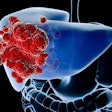A quality assurance program based on response cards filled out by radiologists yielded fruitful results for a Canadian teaching hospital, which saw an encouraging reduction in equipment malfunctions and an increase in staff participation in providing the best care.
In an article appearing in the latest issue of the British Journal of Radiology, a group from CancerCare Manitoba and Winnipeg Children’s Hospital outlined its strategy for implementing a quality assurance (QA) program at the Winnipeg institution.
"The main objective of this study was two-fold. First, to monitor diagnostic x-ray equipment performance, and second, to improve the resultant image quality as a means of implementing the fundamental concepts of continuous quality improvement," the team said (BJR, August 2000, Vol.73:872, pp.843-846).
The main tool in this program was a response card with which radiologists could rate such issues as ease of use, general image quality, and incidentals such as film/patient identification and markers. The cards were placed at each radiologist’s viewing station.
A total of 538 responses were entered into the database, starting in June 1993 and ending in August 1998. Out of the department’s yearly throughput of 20,000 pediatric patients, about 100 radiographs a year were deemed unacceptable, for reasons including overexposure or incorrect technique, the group reported.
In addition, because of the high number of student radiographers and trainee radiologists that filled out QA cards from January to October of each year, senior staff was encouraged to be more vigilant in their training and supervision, they said.
"Although the QA card response is less than 0.25% of the total radiographs read by the reading radiologists in a year, the program continues to provide an open forum by which pediatric radiologists, radiographers, and physicists can discuss means of improvement. The data show that incorrect or no radiographic markers and overexposed radiographs are the most prevalent problems," they said.
By Shalmali PalAuntMinnie.com staff writer
September 7, 2000
Let AuntMinnie.com know what you think about this story.
Copyright © 2000 AuntMinnie.com



















